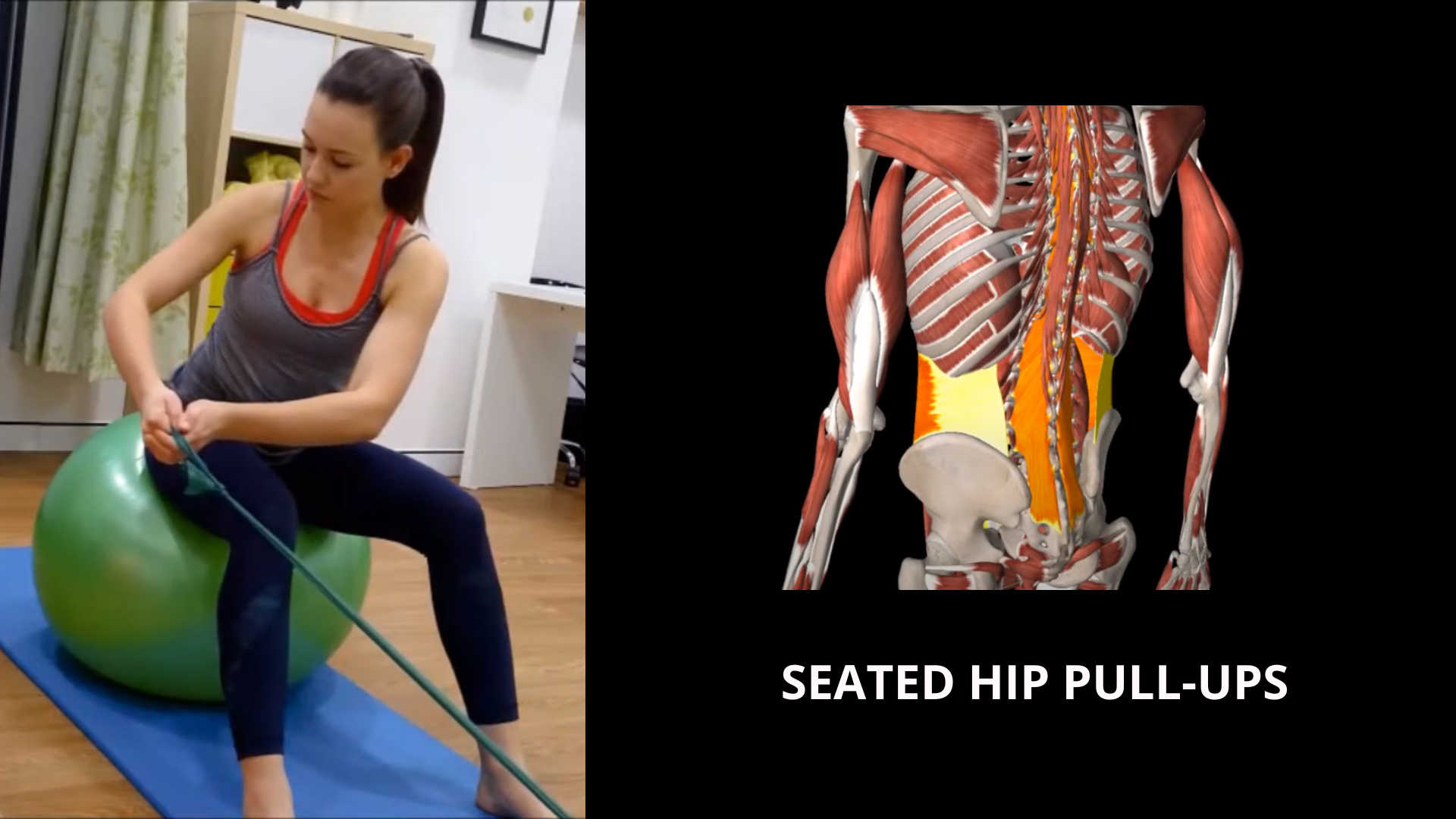Core activation
This supine core exercise targets deep abdominal muscles to support and protect the lower back. Ideal for anyone with back pain, desk workers, and individuals aiming to enhance core stability, it strengthens the core, reduces strain, and promotes better posture and back health.
Seated core and hip hold
Sitting on a stability ball for hip flexor activation engages the core and strengthens pelvic floor endurance, supporting posture and stability. Ideal for individuals seeking improved balance, core control, and lower body strength, this exercise enhances core endurance and promotes pelvic alignment.
Core plank with ball roll
The hip and back advanced strengthening exercise targets core stability and lower body strength, essential for supporting functional movement and reducing injury risk. Ideal for newly pregnant women who are recovering from back issues, and anyone looking to improve overall stability. This exercise enhances hip power and back endurance for improved performance and resilience.
Seated hip pull-ups
The seated-on-ball pull-ups against a resistance band exercise targets back and hip strength, making it effective for rehabilitation. Ideal for improving stability and control, this movement supports back alignment, strengthens hip muscles, and enhances core engagement for a balanced recovery.
Head back shoulder whirl
The head-back-shoulder whirl provides instant neck pain relief and rejuvenates tight muscles, easing tension and promoting relaxation. This gentle movement is ideal for relieving stiffness, improving circulation, and refreshing neck and shoulder muscles for immediate comfort.
Is your desk job causing you neck, back and shoulder pain?
Neck posture & ergonomics for office workers.
Upper cross posture from long screen time
Upper-crossed posture from long screen time leads to forward-rounded shoulders and a strained neck, common among those with long office hours. This posture imbalance places excess tension on the neck and upper back muscles, often resulting in discomfort and stiffness. Addressing this with targeted exercises can help realign posture and reduce neck strain.











